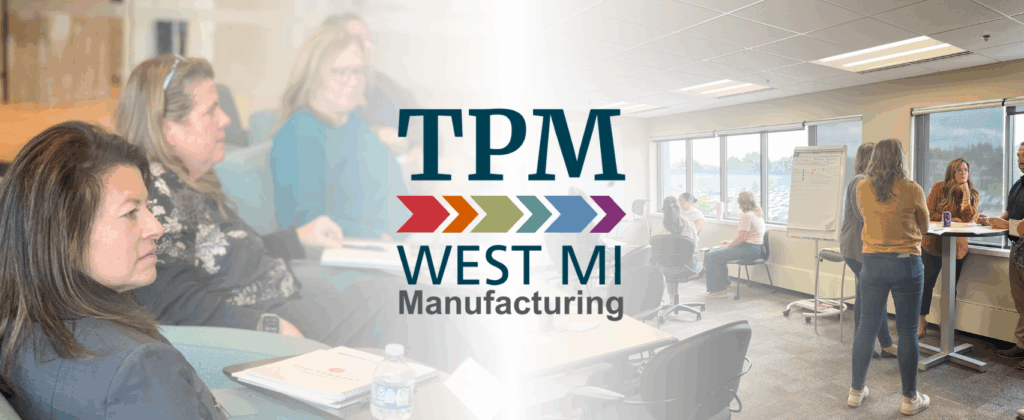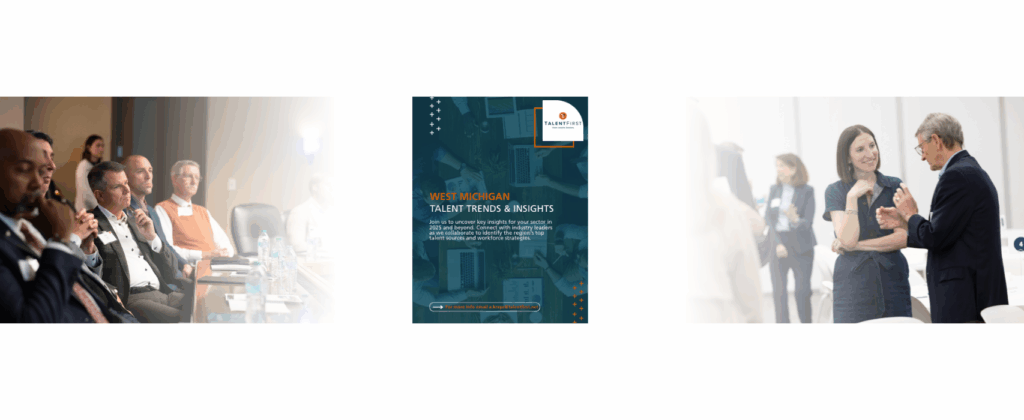If we chose, West Michigan could be like any number of other mid-sized regions around the country, satisfied by surviving and even occasionally thriving, as long as a robust national economy can carry us along.
But West Michigan is not like other regions. The painful lessons of the last economic downturn taught us the dangers of complacency. And so, nearly a decade ago, the stakeholders in our talent system began taking steps to establish West Michigan as an example of how effective talent systems can be the foundation for persistent growth, opportunity and quality of life.
As a result, we have seen West Michigan leapfrog peer regions around the country in key benchmarks: raising median household income, reducing the percentage of individuals in poverty, increasing the percentage of adults with education beyond high school, and more.
Our investment in talent is paying dividends. We are driving population growth for the rest of the state. Innovation and progress are evident across many sectors. And yet the question remains: Are we content with a talent system judged by many to be good? Or are we willing to engage in the hard work required to make it great?
Striving for great
That is the challenge posed by the release last week of Talent 2025’s “20/20 Vision” report, which takes a comprehensive look at the past, present and future of West Michigan’s workforce system.
Much like our overall efforts to improve the region’s talent system, the report itself was an inclusive undertaking. So, we were pleased to issue the report at a gathering of more than 120 stakeholders on October 17th at the Grand Valley State University’s Seidman Center. During a panel discussion with representatives from education, employers, workforce development and nonprofit leaders, one thing became clear. Our region has an enviable enthusiasm to continue the journey from good to great.
The 20/20 Vision report, which can be viewed here, provides a roadmap for that journey.
Looking back, moving ahead
The report builds on nearly a decade of data, research and insights to examine what’s working, what’s not, what needs to be done, and what the stakeholder groups need from one another. It capitalizes on the efforts of Talent 2025’s CEO-led working groups, our persona projects and barriers analysis, supplemented with external research.
The report takes that work further by viewing our progress and goals through the input of more than 60 regional stakeholders. Through online surveys and personal interviews, we collected hundreds of pages of insights from the very people who are doing the work within West Michigan’s talent system.
To convert that qualitative information into qualitative data, we turned to Calvin University’s Center for Social Research, where a research team analyzed and cataloged in-depth interviews with 40 participants.
Several consistent themes emerged from the analysis. The first was a recognition of West Michigan’s spirit of collaboration. In fact, the research indicated so much work is being done that the real challenge is aligning and coordinating those efforts.
Another noteworthy observation was that the region has already developed many practices that can be considered good – even worthy of national recognition – but not yet universally great.
The hard work ahead
The shortcomings of our current system are evident in the large segments of our population left behind during a period of historic economic expansion. Minority groups in particular face persistent barriers to education, training and economic mobility.
Our region must recognize that the only way to achieve our goals is by eliminating the educational and economic gaps that are harming families and preventing us from reaching our full potential. Marginalized populations present an untapped talent resource for our region. We owe to them and ourselves to provide opportunities for success.
The report notes that eliminating racial and ethnic disparities in unemployment alone would add a projected 17,040 workers to the West Michigan labor force, adding over $741 million dollars to the local economy and providing the economic mobility these families deserve.
The goals before us
This next stage of our journey presents some of the hardest work we will have faced. But we know where we are going, and we know stakeholders are committed to the work.
We also know how to get there. Informed by our research and stakeholder input, the Vision Report lays out nine goals to take our work from good to great:
1. Raise awareness of education and lifelong learning as essential for success.
2. Reduce barriers to employment and workforce participation.
3. Build broad employer engagement with educators and workforce leaders.
4. Increase the quality and frequency of information about demand for jobs, aligning more education and training programs to careers.
5. Improve career exploration, coaching, and navigation.
6. Align public policies and investments toward evidence-based strategies.
7. Become a national leader in workforce development.
8. Prioritize credential attainment.
9. Attract and retain more educated talent.
In coming months, we will examine each of these goals and what it will take to elevate our efforts. Now is the time to leverage the incredible work already under way across our region, and to recognize that every stakeholder has a role to play.
The future of West Michigan, and everyone who lives and works here, depends on it.


